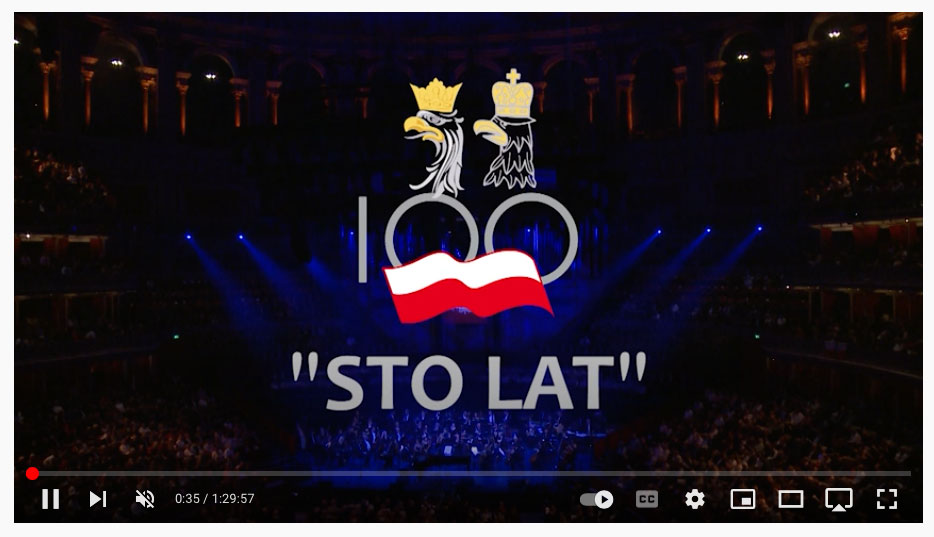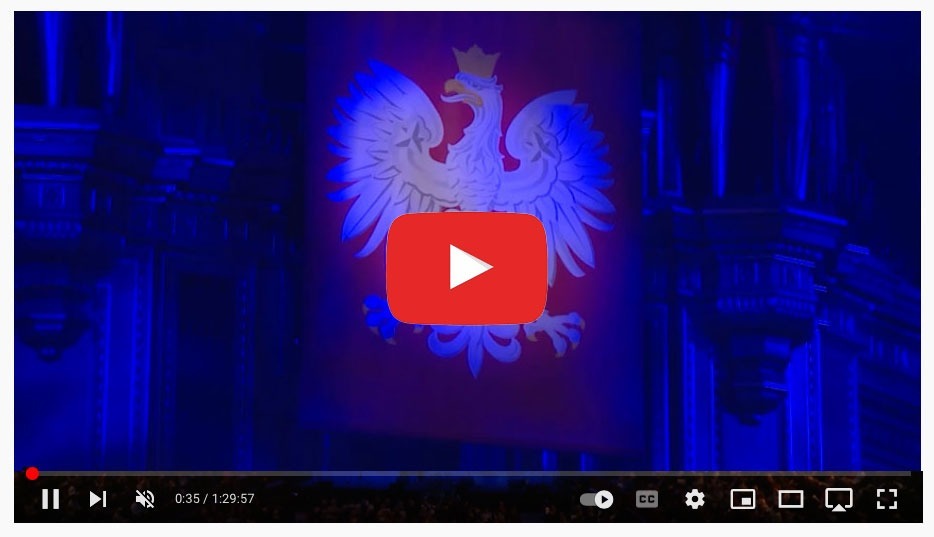
Make a donation
to PHS
Introducing
The Institute
of Polish
Military History
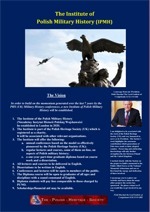
A message from our President, General Lord Guthrie of Craigiebank
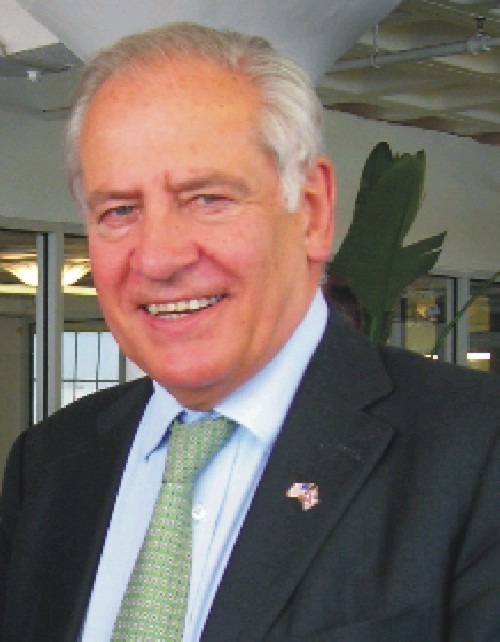
'I am delighted to be associated with the work of the Polish Heritage Society and very honoured to serve as its President. The Society's work highlights the enormous contribution which generations of Poles have made to their adopted country. Preserving and celebrating that heritage will only further strengthen the ties between Poland and the United Kingdom.
I worked closely with the Society on the project to build a memorial to the Polish Forces at the National Memorial Arboretum and saw at first hand the energy and dedication of those involved.
I encourage you to explore this website and learn about the many other projects the Society has sponsored. Do please contact us if you would like to be involved in any way'.
General The Lord Guthrie of Craigiebank GCB LVO OBE
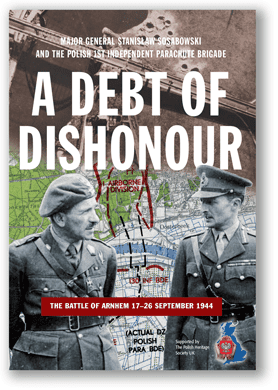
A Debt of Dishonour is a unique documentary film dedicated Major General Sosabowski and all ranks who served in the 1st Polish Independent Parachute Brigade Group and to their Comrades-in-Arms of the 1st British Airborne Division that fought in the ill-fated “Operation Market Garden” at Arnhem and Driel during September 1944.

The Polish Heritage Society
PHS Donates Bust of Maria Skłodowska-Curie to Marie Curie Hampstead Hospice to celebrate life of PHS co-founder Dr Andrew Meeson-Kielanowski
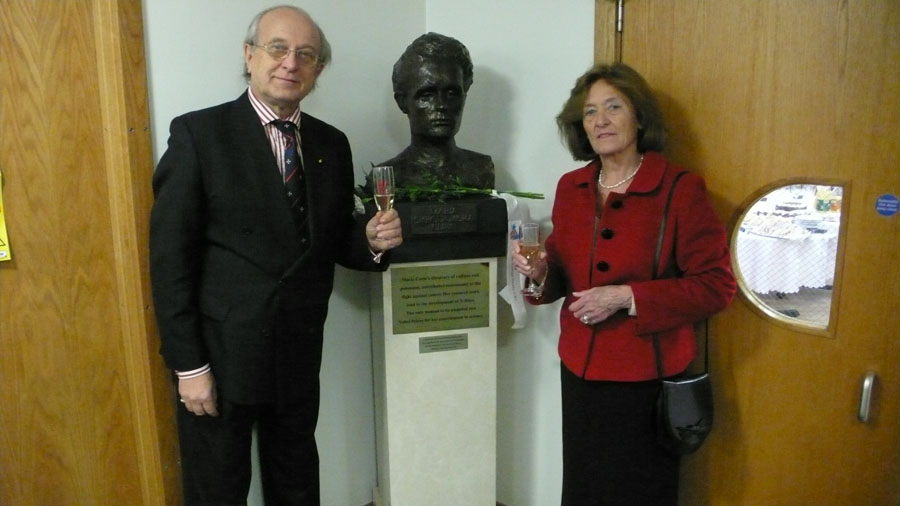 Marek Stella-Sawicki with Mrs. Meeson A bust of the Polish-born scientist Maria Skłodowska-Curie was installed at the Marie Curie Cancer Care hospice in Hampstead on January 22, 2013, the culmination of a project conceived in 2011 to mark the centenary of her second Nobel Prize. The bronze statue is being donated by the Polish Heritage Society.
Marek Stella-Sawicki with Mrs. Meeson A bust of the Polish-born scientist Maria Skłodowska-Curie was installed at the Marie Curie Cancer Care hospice in Hampstead on January 22, 2013, the culmination of a project conceived in 2011 to mark the centenary of her second Nobel Prize. The bronze statue is being donated by the Polish Heritage Society.
It is the first bust of the scientist in any of the hospices or offices of the charity named after her in this country. Marie Curie Cancer Care provides end of life care to terminally ill patients in their own homes or in its nine hospices.
“Too many people are affected by cancer in one way or another. The battle against cancer as it exists today would not be possible without the discoveries made by Maria Skłodowska-Curie,” said Marek Stella-Sawicki, chairman of the Polish Heritage Society.
The statue is also a celebration of the life of Andrew Meeson, an eminent Hampstead doctor, who died of cancer in 2012 after practising in the area for 40 years. He was a former president of Hampstead Medical Society, a co-founder of the Polish Heritage Society, and deeply involved in many other charitable and philanthropic projects.
Skłodowska-Curie was the first woman to be awarded a Nobel Prize, the only woman to win two Nobel Prizes and the only person ever to win Nobel Prizes in two different sciences. Internationally famous under her French name of Marie Curie, which she adopted after marrying the French scientist Pierre Curie, Maria Skłodowska was born and educated in Warsaw. She moved to Paris in 1891 to study at the Sorbonne and, together with her husband began their pioneering work into the invisible rays given off by uranium, building on the research of Professor Henri Becquerel. This led to the discovery of the element Polonium, which she named after her native country.
The trio were awarded the Nobel Prize for Physics for their work on radioactivity in 1903. After her husband’s death in 1906, Marie Curie continued her research and was awarded a second Nobel Prize, this time for Chemistry, in 1911 for discovering a method of measuring radio-activity.
The bronze was cast from a bust sculpted by the Polish artist Tomasz Maciej Danilewicz, who works in Warsaw and Princeton, New Jersey. The original plaster bust was on display at the Royal Castle in Warsaw for ceremonies involving the French and Polish governments at the end of 2011 to mark the anniversary of the Nobel Prize.
The sculpture, which is twice life-size, depicts the scientist as a young woman – just as she might have looked when she left her native Warsaw for Paris.
 Unveiling of the bust
Unveiling of the bust
 Unveiling speech by PHS Chairman Marek Stella-Sawicki MBE, KM
Unveiling speech by PHS Chairman Marek Stella-Sawicki MBE, KM
"Marie Skłodowska-Curie (7 November 1867 – 4 July 1934) was a Polish physicist and chemist, working mainly in France, famous for her research on radioactivity. She was the first woman to win a Nobel Prize, the only woman to win in two fields, and the only person to win in multiple sciences. She was also the first female professor at the University of Paris, and in 1995 became the first woman to be entombed on her own merits in Paris' Panthéon.
She was born Maria Salomea Skłodowska in Warsaw, Poland. She studied at Warsaw's clandestine University and began her scientific training in Warsaw. In 1891, aged 24, she followed her older sister to study in Paris, where she earned her higher degrees and conducted her scientific work. She shared her 1903 Nobel Prize in Physics with her husband Pierre Curie and with another physicist Henri Becquerel. She was the sole winner of the 1911 Nobel Prize in Chemistry.
She founded the Curie Institutes in France, and in Poland, which remain major centres of medical research today. During World War I, she established the first military field radiological mobile centres. While a French citizen, Marie Skłodowska-Curie never lost her sense of Polish identity. She taught both her daughters the Polish language and took them on visits to Poland. She named the first chemical element that she discovered – Polonium, which she first isolated in 1898 – after her native country of Poland.
Dr Andrew Meeson Kielanowski MA, MB, BCh, BAO, KM, co-founder and Vice Chairman of the Polish Heritage Society (UK). A much-loved and widely-respected doctor in Hampstead, he was also a great philanthropist active in numerous charities. As Chairman of the Polish Knights of Malta (UK), he was a tireless fund-raiser for oncology clinics in Poland. He also played a leading role in the successful campaign for a Polish Armed Forces memorial to be erected at the National Arboretum.
It is to celebrate the medical work of Andrew Meeson, we are dedicating this wonderful bust of his polish compatriot Maria Sklodowska-Curie. I would like to thank everybody who made today possible, especially Mrs Hanka Januszewska for all her hard work and everybody from PHS for all support for this important project including Malgosia Alterman who started all this here in Hampstead.
May I now ask Mrs Anita Meeson Kielanowska to unveil the bust of Marie Sklodowska Curie."
 The Hampstead & Highgate Express: Hospice's tribute to scientist
The Hampstead & Highgate Express: Hospice's tribute to scientist
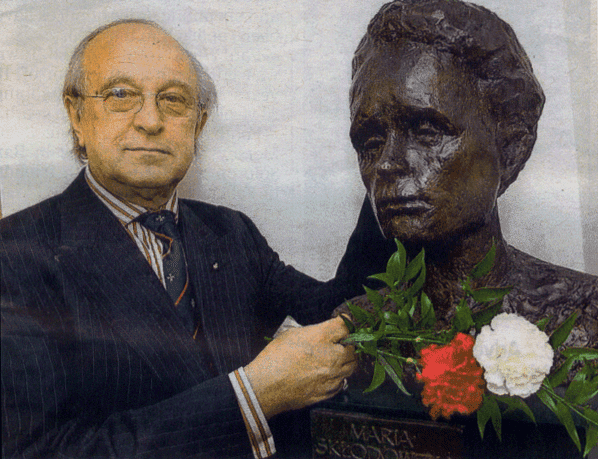 Marek Stella-Sawicki MBE, KM
Marek Stella-Sawicki MBE, KM
Photo: Nigel StuttThe Marie Curie hospice in Hampstead became the first in the country to feature a bust of its namesake. The bronze statue or double Nobel Prize winner Marie Curie was donated to the hospice in Lyndhurst Gardens by the Polish Heritage Society, marking the end of a two-year project celebrating the award-wlnning scientist. The sculpture, which is double life-size, shows the Polish-born pioneer as a young woman aboutmthe time she would have left Warsaw for Paris when she made her scientific breakthroughs.
Chairman of the society Marek Stella-Sawicki. said: "Too many people are affected by cancer in one way or another. The battle against cancer, as it exists today, would not be possible without the discoveries made by Maria Sklodowska (maiden name) Curie."
The statue, presented to the hospice on Tuesday. is also a celebration of the life of Dr Andrew Meeson, who died last year after practising in the area for four decades. He was former president of the Hampstead Medical Society and co-founder of the Polish Heritage Society.
© 2013 The Hampstead & Highgate Express



